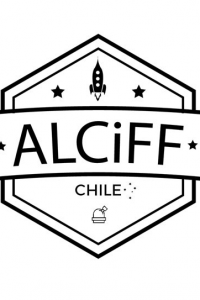Tor AI Controversy
 Tor posted a statement online after receiving widespread criticism on social media in December 2022, criticism based on its cover reveal of Christopher Paolini’s Fractal Noise that appears to include AI-generated graphics. Many illustrators and artists are understandably troubled by the implications of AI-generated images, both because of the potential to take creative work away from human artists, and because the AI tools are trained on artwork that is usually entered into data sets without the permission of the creators, raising serious concerns regarding those creators’ rights.
Tor posted a statement online after receiving widespread criticism on social media in December 2022, criticism based on its cover reveal of Christopher Paolini’s Fractal Noise that appears to include AI-generated graphics. Many illustrators and artists are understandably troubled by the implications of AI-generated images, both because of the potential to take creative work away from human artists, and because the AI tools are trained on artwork that is usually entered into data sets without the permission of the creators, raising serious concerns regarding those creators’ rights.
Tor posted a statement.
Tor Books designed the cover for Fractal Noise by Christopher Paolini. During the process of creating this cover, we licensed an image from a reputable stock house. We were not aware that the image may have been created by AI. Our in-house designer used the licensed image to create the cover, which was presented to Christopher for approval. Due to production constraints, we have decided to move ahead with our current cover. Tor Publishing Group has championed creators in the SFF community since our founding and will continue to do so.
Many stock art sites have been flooded with AI-generated work in recent months, since tools like Midjourney and Dall-E have become widely available for public use.
Paolini defended his publisher’s decision on Twitter, saying, “It’s a major problem. Shifting the release date for Fractal Noise at this point would mean it probably wouldn’t even be published next year.”
One of Tor’s other major authors, John Scalzi, posted a pledge to require Tor to avoid AI-generated artwork on his books:
Tor, which is the publisher of my novels, is being called out for using AI-generated art on a book cover; it appears that they got it from a stock art house. Getting graphic elements from stock art to modify on covers is a common enough practice – including on my own most recent novel cover – but the fact stock art houses are now stocking up on AI-generated art (which they then sell, undercutting creators) is, to put it mildly, not great. It’s possible Tor didn’t know (or didn’t pay attention to) the fact the stock art was AI-generated, but that doesn’t make it better, it kind of makes it worse.
So, two things here:
- I’ll be emphasizing to Tor (and other publishers) that I expect my covers to have art that is 100% human-derived, even if stock art elements are used;
- For now I’m done with AI art in public settings. As much fun as it has been to play with, the fact it’s already migrating onto ‘‘Big Five’’ covers is troubling, and I think it’s more important to stand with and support visual artists than it is to show off things I’ve generated through prompts on social media.
I think there is probably a way to responsibly use and generate art with AI, which probably includes ways to make sure ‘‘training’’ is opt-in and compensated for, but we’re not there yet, and I’m okay waiting for some additional clarity before I start playing with it again in public.
For more, see his statement.
 While you are here, please take a moment to support Locus with a one-time or recurring donation. We rely on reader donations to keep the magazine and site going, and would like to keep the site paywall free, but WE NEED YOUR FINANCIAL SUPPORT to continue quality coverage of the science fiction and fantasy field.
While you are here, please take a moment to support Locus with a one-time or recurring donation. We rely on reader donations to keep the magazine and site going, and would like to keep the site paywall free, but WE NEED YOUR FINANCIAL SUPPORT to continue quality coverage of the science fiction and fantasy field.
©Locus Magazine. Copyrighted material may not be republished without permission of LSFF.







